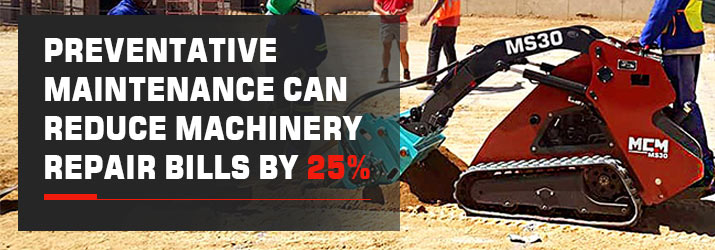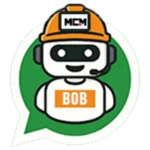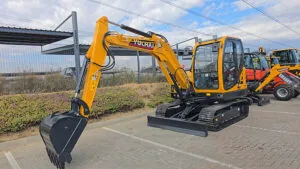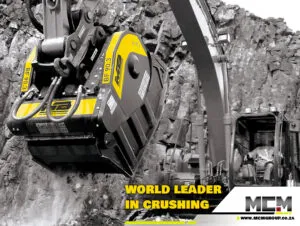Even the most skilled operator can inadvertently shorten a machine’s lifespan and diminish its productivity by misusing certain functions or operating the machine in a manner that accelerates component wear. These risks escalate dramatically when a novice user takes the controls.
Operator training is crucial, particularly when a new machine is introduced to the fleet. An operator using a new machine for the first time might not even realize they are operating it incorrectly. Lacking education about the machine’s peculiarities, features, and technologies, they are likely to operate the equipment in the same manner as any other machine. However, with technology evolving rapidly and the variety of configurations and controls, uninformed operation can lead to numerous issues and result in damage or excessive wear.
Well-trained operators are essential for maximizing productivity, minimizing downtime, and ensuring the longevity of your equipment. Investing in operator training can transform inexperienced operators into machine-saving experts. Here are some other common problem areas with wheel loaders, TLB’s, and similar type machines and tips on how to address them.

1. COOL IT ON THE BRAKES
All loader, TLB and similar equipment brakes (except hydrostatic machines) work by friction, which generates heat. Brakes that are over-applied can cause overheating and premature wear, which can make brakes fail before their time. Common causes include:
- untrained operators going too fast and then making short, quick stops.
- unintentional application by “riding” the brake pedals.
- hurried operators (under pressure to be more productive) going heavy on the throttle and then heavy on the brakes to stop fast or in a shorter distance.
To extend brake life, train operators to slow down earlier and let the weight of the machine and load bring the machine to a near stop before applying the brakes.
The most frequent wear areas on loaders include the front pins, bucket, bucket wear plates, and teeth; insufficient general maintenance accelerates this wear. For instance, neglecting greasing can hasten the pin wear. Therefore, adhering to greasing and other daily service guidelines is crucial.
It is essential to keep an eye on the buckets and rotate or replace wear plates on the front before they begin to damage the bucket itself. Allowing wear plates to wear down excessively can lead to premature bucket wear, which can be quite costly.
- Avoid overloading: Overloading the bucket can cause unnecessary stress on the machine’s components, including the bucket, hydraulic system, and front pins, machine structural components. Always adhere to the manufacturer’s recommended load capacities.
- Properly Load Material: Ensure that the material is evenly distributed in the bucket to maintain balance and avoid potential tipping hazards. Another crucial error operators make is forcefully ramming the bucket into a pile of material; instead, smoothly approach the pile and gradually scoop it up. Always enter into and scoop materials in a controlled manner to minimize wear and tear.
- Operate At Appropriate Speeds: Avoid abrupt stops, starts, and turns, as these can put undue stress on the bucket and the machine’s components. Always operate at a safe and controlled speed to minimize wear and tear.
- Use Proper Dumping Techniques: When dumping material, gradually lift and tilt the bucket to prevent excessive stress on the machine’s components. Avoid dumping from extreme heights or angles, as this can lead to unnecessary wear on the bucket and machine structure. Dumping materials should always be done in a safe and controlled manner to minimize wear and tear.
- Avoid High Impact Dumping: Dumping material from excessive heights or with too much force can cause unnecessary stress on the machine, resulting in deformation, cracks, or damage to the bucket teeth and wear plates. A operator that forcefully crashes the bucket in order to dump material is effectively putting the machine’s critical components under strain.
- Regular Maintenance: Regularly inspect the bucket for signs of wear, such as cracks or damaged teeth. Replace or repair any worn components as needed to maintain optimal performance.
- Avoid Dragging The Bucket: Dragging the bucket on the ground can cause excessive wear on the cutting edge and wear plates. Instead, keep the bucket slightly elevated while moving to minimize contact with the ground.
- Match The Bucket To The Task: Use the appropriate bucket type and size for the specific job to ensure optimal performance and minimize wear. Utilizing the wrong bucket can lead to inefficient operation and increased wear on the bucket and loader components.
- Inadequate maintenance: Neglecting regular maintenance and inspections can exacerbate the wear and tear caused by dumping material. Regularly checking the bucket and loading parts for signs of wear and addressing any issues promptly can help extend the life of the loader and its components.
3. DON’T TAKE SHIFTING SHORTCUTS
Transmission and transmission clutch wear can be a concern, depending on how the machine is being operated. Improper shifting can cause added wear and tear on the transmission and clutch. High-speed shifts are the most common culprit. Taking shortcuts while shifting gears on a machine’s transmission can pose several dangers and risks to both the operator and the equipment:
- Transmission Damage: Shifting gears improperly can cause excessive stress on the transmission components, leading to premature wear, component failure, or even a complete breakdown of the transmission system. Each specific machine has different operating requirements that the operator needs to know about and follow.
- Loss of Control: Abrupt or incorrect gear shifts can result in sudden changes in the machine’s speed and power, potentially causing the operator to lose control of the equipment, which can lead to accidents, damage, or injuries.
- Increased Fuel Consumption: Improper gear shifting can negatively impact the machine’s fuel efficiency, leading to increased fuel consumption and higher operating costs.
- Accelerated Wear On Drive train Components: Taking shortcuts while shifting gears can cause unnecessary stress on the machine’s drive train components, such as the axles, differential, and drive shaft, resulting in increased wear and potential failure.
- Reduced Productivity: Improper shifting techniques can hinder the loader’s performance, reducing its overall productivity and efficiency on the job site.
To mitigate these risks, it is crucial to ensure that operators receive proper training on how to safely and efficiently operate the machine and its transmission and drive train, including correct gear-shifting techniques.
A equipment operator should carry out routine pre-start checks before each operation. These checks are crucial for ensuring the safety, efficiency, and longevity of the machine, as well as for identifying and addressing any potential issues before starting work. Pre-start checks can help prevent accidents, injuries, and further damage to the equipment while minimizing downtime due to unexpected breakdowns or malfunctions. In addition, these checks promote operator accountability, early detection of issues, and compliance with relevant regulations and guidelines related to equipment safety and maintenance.

Performing a routine pre-start checklist each time before operation offers numerous benefits to both the operator and the equipment:
- Enhanced Safety: A pre-start checklist helps identify potential issues, such as leaks, damaged components, or loose parts, before starting work. Addressing these concerns in advance can prevent accidents, injuries, and further damage to the equipment.
- Improved Productivity: Identifying and addressing any issues before starting work ensures that the equipment operates at peak efficiency, reducing downtime due to unexpected breakdowns or malfunctions.
- Equipment Longevity: Regularly inspecting and maintaining the machine can extend its service life and minimize the need for costly repairs or replacements. A pre-start checklist helps operators identify areas requiring attention, such as lubrication, tightening bolts, topping off fluids, air filters, belts, etc.
- Early Detection of Issues: Regularly carrying out a pre-start checklist enables operators to detect issues early, reducing the risk of more severe problems developing later. Early detection can save both time and money by addressing problems before they escalate.
- Operator Accountability: A pre-start checklist fosters a sense of responsibility and accountability among operators. When operators are aware of the importance of pre-start inspections, they are more likely to take proper care of the equipment and adhere to safe operating procedures.
- Reduced Overall Costs: By ensuring that the machine is in optimal working condition before each operation, operators can minimize downtime, increase productivity, and reduce long-term maintenance costs.
5. TAKE TIME FOR WARM-UPS
Performing warm-ups before operating the machine offers several benefits to both the operator and the equipment. These benefits include:
- Enhanced Safety: Warming up the machine allows the operator to verify that all components are functioning correctly before starting work. By identifying any potential issues early, operators can prevent accidents, injuries, or further damage to the equipment.
- Improved Efficiency: During the warm-up period, the engine reaches its optimal operating temperature, ensuring better fuel efficiency and overall performance. Cold engines may consume more fuel and struggle to achieve peak power, leading to reduced productivity.
- Component Longevity: Gradually warming up the engine, hydraulics, and transmission components helps to distribute lubrication evenly, reducing the likelihood of excessive wear and tear on moving parts. This can extend the life of the equipment and minimize the need for costly repairs or replacements.
- Hydraulic System Protection: Warming up the hydraulic system allows the hydraulic fluid to reach its ideal operating temperature, ensuring optimal fluid viscosity and smooth operation of the hydraulic components. This reduces the risk of leaks, component failure, or damage caused by cold hydraulic fluid.
- Operator Readiness: The warm-up period also provides an opportunity for the operator to become familiar with the machine’s controls and review the tasks for the day. This mental preparation can lead to increased efficiency, better decision-making, and a reduced risk of accidents or errors.
ESSENTIAL OPERATOR TIPS:
- Clean The Machine’s Interior: Regularly remove dirt and debris from the machine’s interior or operator station. One simple example is keeping debris out from under the brake pedal to prevent it from sticking, which can lead to premature brake wear and overheating.
- Maintain a Clean Exterior: Dirt accumulation can cause abrasive wear on moving parts and trap heat in major components, leading to accelerated fluid and seal deterioration. One crucial example is ensuring cooling cores remain free of dirt to maintain optimal cooling efficiency and prevent overheating.
- Avoid Working In Water: Operating in water can lead to liquid entering the axles and transmission, causing damage to bearings, gears, and brakes. Minimize working in deep water whenever possible.
- Adhere to Daily Greasing Guidelines: Following the manufacturer’s instructions for daily greasing is essential to prevent accelerated component wear.
- Conduct Pre- And Post-Shift Inspections: Perform walk-around inspections at the beginning and end of each shift to identify and address potential issues before they escalate.
By adhering to these tips, machine operators can ensure the longevity and efficiency of their equipment, reducing the risk of costly repairs and downtime.
READ MORE:
Did you know there’s a difference between Preventative Maintenance and Scheduled Maintenance? Read More About The Importance Of Equipment Pre-Start Routine In This MCM Article: CLICK HERE
Preventative Maintenance and Inspections should be a DAILY practice to all equipment owners. Before you start up your machine, there are important things to look for that can help avoid unanticipated downtime and expenses in the future. Pre-Start Checks are very important, and must be carried out by the operator, supervisor or responsible individual.
Read More About The Importance Of Equipment Pre-Start Routine In This MCM Article: CLICK HERE





